- Home
- Jane Smiley
Charles Dickens
Charles Dickens Read online
Contents
Preface
CHAPTER ONE
CHAPTER TWO
CHAPTER THREE
CHAPTER FOUR
CHAPTER FIVE
CHAPTER SIX
AFTERWORD
For Further Reading
VIKING
Published by the Penguin Group
Penguin Putnam Inc., 375 Hudson Street, New York, New York 10014, U.S.A.
Penguin Books Ltd, 80 Strand, London WC2R 0RL, England
Penguin Books Australia Ltd, 250 Camberwell Road, Camberwell, Victoria 3124, Australia
Penguin Books Canada Ltd, 10 Alcorn Avenue, Toronto, Ontario, Canada M4V 3B2
Penguin Books India (P) Ltd, 11 Community Centre, Panchsheel Park, New Delhi–110 017, India
Penguin Books (N.Z.) Ltd, Cnr Rosedale and Airborne Roads, Albany, Auckland, New Zealand
Penguin Books (South Africa) (Pty) Ltd, 24 Sturdee Avenue, Rosebank, Johannesburg 2196, South Africa
Penguin Books Ltd, Registered Offices: Harmondsworth, Middlesex, England
First published in 2002 by Viking Penguin, a member of Penguin Putnam Inc.
13579108642
Copyright © Jane Smiley, 2002
All rights reserved
LIBRARY OF CONGRESS CATALOGING-IN-PUBLICATION DATA
Smiley, Jane.
Charles Dickens / Jane Smiley.
p. cm.—(Penguin lives series)
“A Penguin life.”
“A Lipper/Viking book.”
ISBN 978-1-1012-1543-2
1. Dickens, Charles, 1812–1870. 2. Novelists, English—
19th century—Biography. I. Title. II. Series.
PR4581.S616 2002
823'.8—dc21
[B] 2001045607
This book is printed on acid-free paper.
Printed in the United States of America
Set in Adobe Garamond • Designed by Francesca Belanger
Without limiting the rights under copyright reserved above, no part of this publication may be reproduced, stored in or introduced into a retrieval system, or transmitted, in any form or by any means (electronic, mechanical, photocopying, recording, or otherwise), without the prior written permission of both the copyright owner and the above publisher of this book.
PUBLISHED TITLES IN THE PENGUIN LIVES SERIES:
Larry McMurtry on Crazy Horse
Edmund White on Marcel Proust
Peter Gay on Mozart
Garry Wills on Saint Augustine
Jonathan Spence on Mao Zedong
Edna O’Brien on James Joyce
Douglas Brinkley on Rosa Parks
Elizabeth Hardwick on Herman Melville
Louis Auchincloss on Woodrow Wilson
Mary Gordon on Joan of Arc
Sherwin B. Nuland on Leonardo da Vinci
Nigel Nicolson on Virginia Woolf
Carol Shields on Jane Austen
Karen Armstrong on the Buddha
R. W. B. Lewis on Dante
Francine du Plessix Gray on Simone Weil
Patricia Bosworth on Marlon Brando
Wayne Koestenbaum on Andy Warhol
Paul Johnson on Napoleon
Thomas Cahill on Pope John XXIII
Marshall Frady on Martin Luther King, Jr.
FORTHCOMING:
John Keegan on Winston Churchill
Roy Blount, Jr., on Robert E. Lee
David Quammen on Charles Darwin
Bobbie Ann Mason on Elvis Presley
James Gleick on Isaac Newton
Kathryn Harrison on Saint Thérèse of Lisieux
Robert V. Remini on Joseph Smith
Hilton Als on James Baldwin
Ada Louise Huxtable on Frank Lloyd Wright
Thomas Keneally on Abraham Lincoln
Martin E. Marty on Martin Luther
Simon Schama on Oliver Cromwell
GENERAL EDITOR: JAMES ATLAS
Preface
THE LITERARY SENSIBILITY of Charles Dickens is possibly the most amply documented literary sensibility in history. Not only did he write fifteen novels, ten of which were eight hundred or more pages long, he also wrote numerous stories, articles, travel pieces, essays, letters, editorial notes, and plays. For his entire literary life, he was observed by relatives, friends, servants, acquaintances, fellow authors, and strangers, who wrote about him in reviews, articles, diaries, letters, biographies, memoirs, and autobiographies. He was relentlessly observed by himself, sometimes sympathetically, sometimes unsympathetically. He was, in short, an object of fascination, a true celebrity (maybe the first true celebrity in the modern sense), a social phenomenon, a figure unique among his contemporaries and yet representative of them, as they themselves understood. Among English writers, Dickens’s only peer, in terms of general fame, worldwide literary stature, and essential Englishness, is William Shakespeare, and the two authors are alike in several ways. Both peopled the imaginative landscape in a manner almost superhuman, pouring forth characters of such number, variety, and vividness that it seems impossible that they could be the products of a single mind. Both depicted English life when English life was at its most interesting and vital, and both seemed to sparkle at the center of that life, in London, though both were also adept at evoking English pastoral scenes. They share another quality, too, and that is that both remain essentially mysterious, Shakespeare in part because so little is known of him outside of his plays, and Dickens in part because everything that is known of him makes him all the more difficult to comprehend.
Biographies of Dickens, long and short, abound. A lifelong friend of his, John Forster, published the first authoritative one shortly after Dickens died. The most recent, by Peter Ackroyd, published in 1990, is more than a thousand pages long. It is, therefore, not the intention of this volume to lay out chronologically everything that we have come to know of Charles Dickens’s life as a result of some 130 years of industrious digging on the part of aficionados and scholars from all parts of the world (though admittedly mostly from England). The Charles Dickens we know is decidedly different from the man his contemporaries knew. For one thing, Dickens did not reveal the details of his painful childhood even to his children, and he did not come to terms with it himself until he chose to revisit his early experiences while writing David Copperfield. He kept other secrets as well. Rather than telling his story chronologically, I will attempt to evoke Dickens as he might have seemed to his contemporary audience, to friends and relatives, to intimate acquaintances, to himself, filling in the background only as he became willing to address it in his work. My purpose here is to avoid the dreary illusion of superiority that comes when critics and biographers purport to know a subject better than (or more truthfully than or more insightfully than) the subject knew himself. Writers and artists are often portrayed as carriers of their own works, rather like carriers of disease, who communicate them to the world at large unconsciously, giving themselves away without design or intention. My own experience as a writer and a reader is quite different. Writing is an act of artistic and moral agency, where choices are made that the author understands, full of implications and revelations that the author also understands. One thing that we know about Dickens from his editorial work is that he had an exceptionally sophisticated understanding of how writing works—of what is appealing and why, of the balance between the artistic and the commercial, of how to create effects, and of the competing claims of morality, aesthetics, and truth in the composition and social function of serious fiction, as well as the other forms of literature that Dickens turned his attention to. We also know that Dickens was quite well aware of the impression he made upon those around him and was adept at manipulating it. Acting was his great avocation from first to last, and he worked as hard at t
he presentation of his works, and of himself, as he did at his writing and editing.
In addition, I will offer interpretations of almost all of Dickens’s major works. One of the most interesting things about Charles Dickens is the way in which his style and his interest in social themes remained remarkably consistent throughout his career, while his vision shifted and evolved. His Christmas books, for example, offer a different philosophical solution to the dilemmas presented by capitalism than do his great novels of the 1850s, Bleak House and Little Dorrit. Dickens was intently and systematically engaged with the social and economic questions of his time. He passionately sought solutions for such practical issues as public sanitation and relief of want and ignorance; he also pondered death, evil, cruelty, innocence, comfort, pleasure, happiness, and redemption. And he was an endlessly witty man, for whom words were a permanent delight. His novels shaped his life as much as his life shaped his novels, and just as his novels were in part commentary on his life, so his actions, in part, grew out of the way that writing novels gave his feelings and thoughts specific being. To a novelist, his work is not his product but his experience. Over time, his readers are further and further removed from the details of his life, but while they are reading his books, they are in his presence, experiencing his process of thought and imagination as it precipitates inchoate idea to particular word. To me, this is the miracle of literature, that minds can communicate, can meditate upon the same images, across decades, centuries, and miles. Charles Dickens was so thoroughly a novelist that we can hardly know him at all without following him into every novel.
Let us, then, not approach the man himself with a hostile desire to catch him out in self-contradictions and failures of self-knowledge, but rather with a friendly desire to get to know him and to achieve what Victorians might have termed “a growing intimacy.”
CHAPTER ONE
CHARLES DICKENS was a public man and a famous man, and he assumed both of these slightly different roles in his early twenties. His first sketch, “A Dinner at Poplar Walk,” was published in the Monthly Magazine in December 1833. Dickens, born on February 7, 1812, was only twenty-one, but because of his work as a parliamentary reporter (he had taught himself shorthand and was able to take down speeches word for word), he was already familiar with seeing his name in print. Nevertheless, he related later that “I walked down to Westminster Hall, and turned into it for half an hour, because my eyes were so dimmed with joy and pride, that they could not bear the street, and were not fit to be seen there.” Further sketches published in monthly and weekly magazines over the following months attracted considerable notice, and when Sketches by Boz appeared in volume form in February and December 1836, they were well reviewed. What everyone, including Dickens himself, considered especially remarkable was their breadth of scope, and in particular the variety of lower-class characters and scenes depicted, perhaps a first in English literature. One reviewer called them “a perfect picture of the morals, manners, and habits of a great portion of English Society.”
At only twenty-four, Dickens found himself in an advantageous authorial position—he was invited to contribute the text for a series of sporting engravings to be published by the firm of Chapman and Hall. They offered Dickens £14 per month (it is impossible to know exactly what this would be equivalent to in modern dollars, but it is useful to multiply any Dickensian sum by 35, which would make his fee about $500). The artist, Robert Seymour, was successful and famous, and it was he who was supposed to take the lead in conceiving and guiding the collaboration. The arrangement lasted two months, until Seymour committed suicide. In even this short a time, though, Dickens was able to assert his own resolve that he should direct the project, and by the time another artist, Hablot Browne, was hired, Dickens had gotten himself a raise, increased the proportion of the writing to the illustrations, and turned the whole endeavor into The Pickwick Papers, which was destined to become a publishing phenomenon.
The Pickwick Papers was published between March 1836 and November 1837. From that time to the end of his life, Charles Dickens was a figure of whom everyone had something to say, so it is appropriate to take a look at him upon his first real entrance into the condition of celebrity. First and foremost, friends and acquaintances noted his lively presence, his charm, his good looks, and his colorful style of dress. Though rather short, and even slight, Dickens was extremely straight in his bearing, and his friend and future biographer John Forster recalled “the quickness, keenness, and practical power, the eager, restless, energetic outlook. . . . Light and motion flashed from every part of it.” Forster asserted that humor, “habitual, unbounded, and resistless,” was his most essential characteristic, but everyone he knew expressed astonishment at Dickens’s level of activity, whether the object of that activity was work, games, exercise, amateur acting and play production, charitable projects, or anything else. He was good company and he loved all sociable amusements. He later commented that at this time of his life he was going out to the theater sometimes every night of the week—not only to see the more respectable offerings at Covent Garden and Drury Lane, but to any and all sorts of shows, spectacles, pageants, and performances. Himself adept at declaiming, singing, and performing, he was invited everywhere and participated fully in all forms of the social life of the time—parties and “at homes,” nights on the town with groups of male friends, dinners, jaunts, impromptu adventures. Already, though, observers were finding something uncanny about his manner. As astute as he was charming, he often gave people the sense that they were being “scanned” from top to bottom. Extant portraits and photographs certainly fail to reveal the Dickens that his contemporaries knew, especially in the early years, since for various technical reasons subjects were never pictured or photographed smiling. It is especially important, therefore, to be mindful that what the twenty-first century is able to see of Dickens is the merest brittle shell of how he appeared to those around him.
The Pickwick Papers sold fewer than 500 copies of the first monthly number. The fourth number sold 4,000, the eleventh 14,000, and the last numbers around 40,000. Once published in volume form, it sold well for the rest of Dickens’s life and after. By 1878, it had sold 1.6 million copies in various editions.
The success of his literary efforts enabled Dickens to progress in his private life, and on the second of April 1836, he married Catherine Hogarth, the daughter of George Hogarth, the editor of the newly established Evening Chronicle, a journal to which Dickens contributed twenty pieces. The Hogarths were Scottish, and before becoming a journalist George had been a lawyer in Edinburgh and the legal adviser and intimate friend of Walter Scott, an author Dickens very much admired. Catherine was the eldest of nine children, and the Hogarths were a lively, clever family. George himself was an accomplished musician and served as music critic of another newspaper that Dickens had written for, the Morning Chronicle.
The twenty-four-year-old Dickens embraced the Hogarth family and, in turn, was embraced by them. He was impressed with their cultural connections, their liveliness, and their talents, especially the musical ones, which Dickens had a particular affinity for, being himself a performer and ready singer of popular songs, and he treated not only George but also Mrs. Hogarth with great affection. It may have seemed to him that he had found the one family that perfectly reflected his own aspirations to a hardworking prominence that was both artistic and bourgeois. An earlier suit had failed. His beloved, a young woman named Maria Beadnell, daughter of a banker, whom he had courted obsessively for four years, had finally rejected him (or her connections had broken off the relationship—the circumstances remain unclear) in May 1833.
Catherine Hogarth was a placid and gentle young woman of twenty quite unlike Maria Beadnell. Dickens’s letters to her show that he felt affectionate toward Catherine, though not especially passionate, and that he took directing and molding her as seriously as he took pleasing and courting her—he was moving eagerly into the accepted Victorian role of paterfamilias. He al
so grew quite fond of, and intimate with, Catherine’s younger sister Mary, who moved in with the young couple. His marriage and his relationship with the Hogarths, then, nicely expressed who he thought himself to be at the time, as well as his ideal of family life—a sort of cozy, busy, fecund, sociable, and comfortable household where people with imagination, energy, and considerable social mobility could gather and find both enjoyment and stimulation. The family formed by Charles, Catherine, and Mary seems to have suited all of them, and for Dickens it was as close as he ever came to domestic happiness. The gentle and affectionate, but somewhat languid Catherine satisfied the role of wife and mother, while the quicker Mary offered a more virginal and intellectual form of female companionship.
By the age of twenty-four, Dickens had already been working for nine years. He had applied himself to every task with vigor, and through a mixture of indefatigable endeavor, talent, imagination, charm, and focus, he had succeeded at nearly everything he tried. Only his great passion for acting had been stymied: on the day of his audition as a professional actor, he had fallen ill with a cold. Publication, of course, and the huge success of Pickwick fixed his professional course, but he could never be said to have “failed” at acting—he came back to it over and over, in amateur theatricals and other performances, and always received excellent reviews. In addition, in this same period, he became friends with William Charles Macready, one of the greatest actors of the Victorian period, a man who did much to rehabilitate the plays of William Shakespeare from the corrupted versions common in the eighteenth century.
Foremost among Dickens’s friends was John Forster, another literary bon vivant and another ambitious and self-made man. Dickens and Forster were close associates in every way for the rest of Dickens’s life, in personal, artistic, and public affairs. Forster handled many of Dickens’s business matters, was his artistic and editorial adviser on many projects, and at last wrote the first and in some ways the most exhaustive (though discreet) Dickens biography. There were plenty of other friends, mostly artists, authors, and other men of the artistic/public sort.

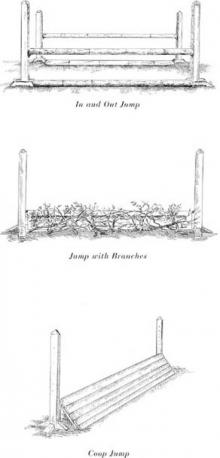 The Georges and the Jewels
The Georges and the Jewels Pie in the Sky: Book Four of the Horses of Oak Valley Ranch
Pie in the Sky: Book Four of the Horses of Oak Valley Ranch Duplicate Keys
Duplicate Keys Charles Dickens
Charles Dickens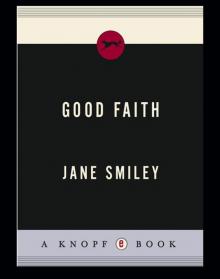 Good Faith
Good Faith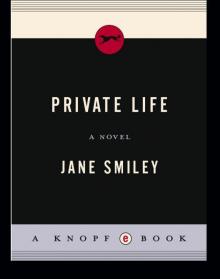 Private Life
Private Life A Thousand Acres: A Novel
A Thousand Acres: A Novel The Greenlanders
The Greenlanders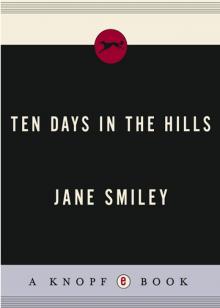 Ten Days in the Hills
Ten Days in the Hills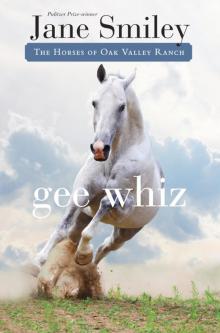 Gee Whiz: Book Five of the Horses of Oak Valley Ranch
Gee Whiz: Book Five of the Horses of Oak Valley Ranch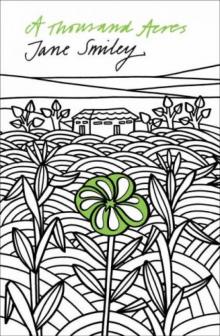 A Thousand Acres
A Thousand Acres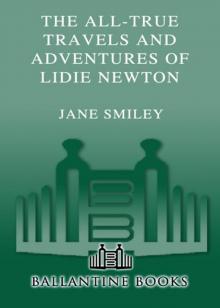 The All-True Travels and Adventures of Lidie Newton
The All-True Travels and Adventures of Lidie Newton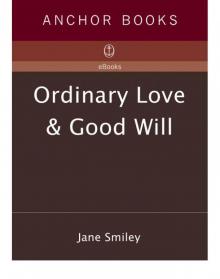 Ordinary Love and Good Will
Ordinary Love and Good Will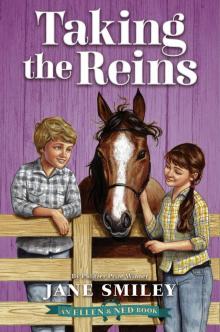 Taking the Reins (An Ellen & Ned Book)
Taking the Reins (An Ellen & Ned Book) The Man Who Invented the Computer
The Man Who Invented the Computer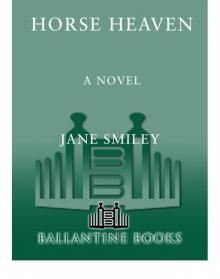 Horse Heaven
Horse Heaven The Age of Grief
The Age of Grief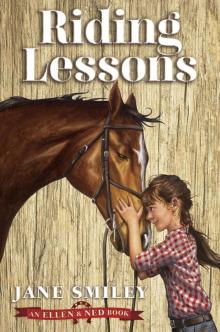 Riding Lessons
Riding Lessons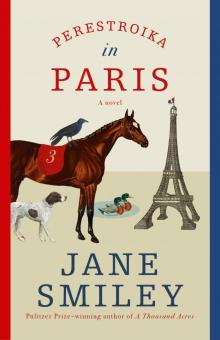 Perestroika in Paris
Perestroika in Paris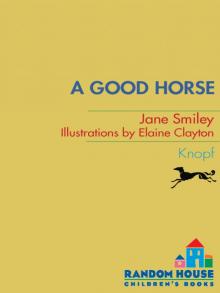 A Good Horse: Book Two of the Horses of Oak Valley Ranch
A Good Horse: Book Two of the Horses of Oak Valley Ranch Saddles & Secrets (An Ellen & Ned Book)
Saddles & Secrets (An Ellen & Ned Book)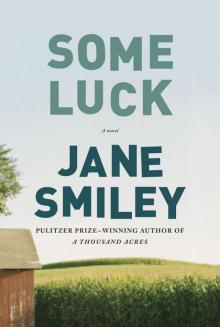 Some Luck: A Novel
Some Luck: A Novel Champion Horse
Champion Horse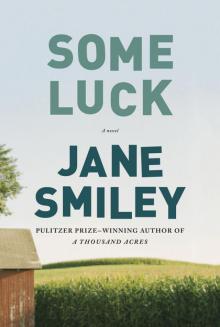 Some Luck
Some Luck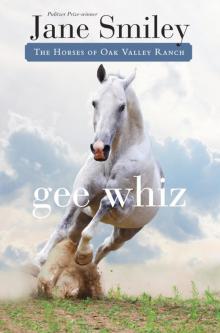 Gee Whiz
Gee Whiz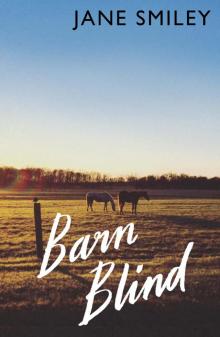 Barn Blind
Barn Blind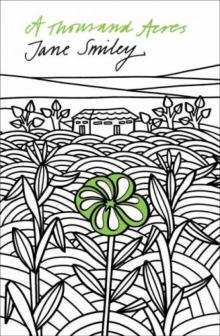 A Thousand Acres (1992 Pulitzer Prize)
A Thousand Acres (1992 Pulitzer Prize) Pie in the Sky
Pie in the Sky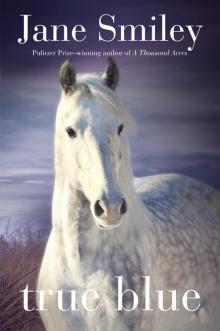 True Blue
True Blue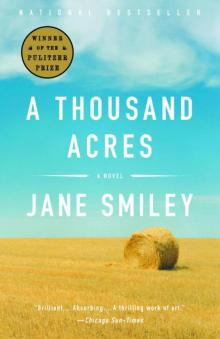 A Thousand Acres_A Novel
A Thousand Acres_A Novel A Good Horse
A Good Horse